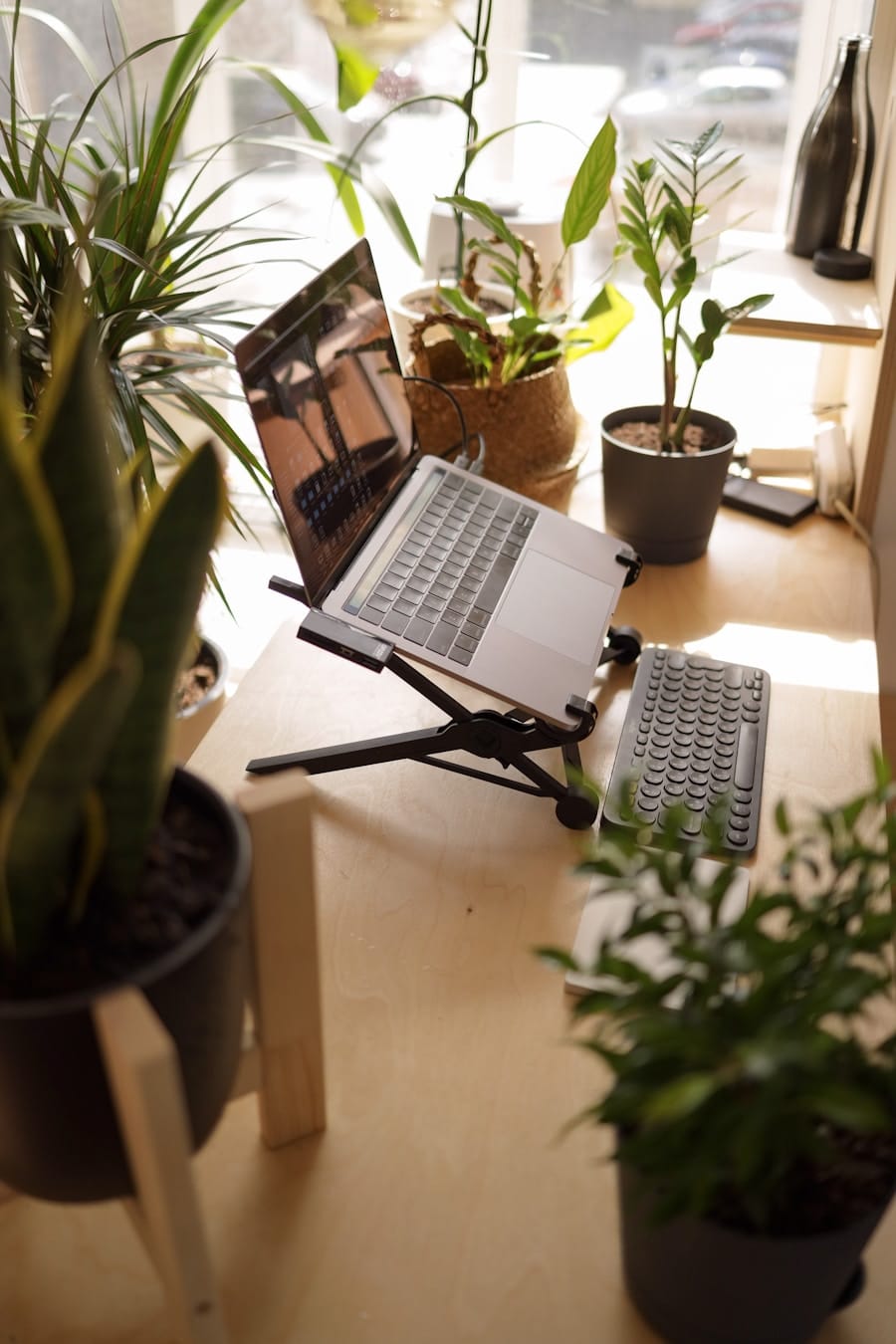The concept of remote work has evolved significantly over the past few decades, transitioning from a niche arrangement to a mainstream mode of employment. Initially, telecommuting was often viewed as a privilege reserved for a select few, primarily in tech industries or for roles that required minimal physical presence. However, the advent of the internet and digital communication tools has democratized this work style, allowing employees across various sectors to perform their duties from virtually anywhere.
The COVID-19 pandemic acted as a catalyst, accelerating the adoption of remote work practices as organizations were forced to adapt to lockdowns and social distancing measures. This sudden shift not only highlighted the feasibility of remote work but also showcased its potential benefits, such as increased productivity, reduced overhead costs, and improved work-life balance. As companies began to recognize the advantages of a remote workforce, many adopted hybrid models that combined in-office and remote work.
This flexibility has led to a rethinking of traditional workplace structures, with organizations investing in technology and infrastructure to support distributed teams. The rise of remote work has also prompted a cultural shift, where trust and autonomy have become central tenets of employee engagement. Workers now expect more control over their schedules and environments, leading to a demand for policies that prioritize flexibility.
This transformation has not only reshaped individual roles but has also influenced broader economic trends, as cities and regions adapt to changing workforce dynamics and the implications for local economies.
Key Takeaways
- Remote work has seen a significant rise in recent years, allowing employees to work from anywhere with an internet connection.
- Advancements in wireless technology have enabled seamless connectivity and communication for remote workers, leading to increased productivity and efficiency.
- The introduction of 5G has revolutionized remote workspaces, providing faster and more reliable internet connections for remote workers.
- Virtual reality and augmented reality are being integrated into remote work, offering immersive and interactive experiences for remote team collaboration and training.
- Security concerns in wireless workspaces have become a major focus, with the need for robust cybersecurity measures to protect sensitive data and information.
Advancements in Wireless Technology
The evolution of wireless technology has played a pivotal role in facilitating the rise of remote work. Over the years, advancements in Wi-Fi standards, mobile broadband, and satellite communications have significantly enhanced connectivity options for remote workers. The introduction of Wi-Fi 6, for instance, has improved data transfer speeds and increased network capacity, allowing multiple devices to connect seamlessly without compromising performance.
This is particularly important in remote work settings where employees often rely on video conferencing tools, cloud-based applications, and real-time collaboration platforms that demand high bandwidth. Moreover, the proliferation of mobile devices has transformed how individuals engage with their work. Smartphones and tablets equipped with advanced processing capabilities enable employees to stay connected and productive while on the go.
As wireless technology continues to evolve, it not only enhances the efficiency of remote work but also opens up new possibilities for how teams collaborate across distances. The integration of these technologies into everyday work life has made it easier for employees to communicate, share information, and maintain productivity regardless of their physical location.
The Impact of 5G on Remote Workspaces

The rollout of 5G technology marks a significant milestone in the evolution of remote workspaces. With its promise of lightning-fast internet speeds and minimal latency, 5G is set to revolutionize how remote teams operate. One of the most notable impacts is the enhancement of video conferencing capabilities.
High-definition video calls that were once plagued by lag and interruptions can now occur seamlessly, allowing for more effective communication and collaboration among team members. This improvement is particularly crucial for businesses that rely on visual presentations or face-to-face interactions to foster relationships and drive projects forward. Additionally, 5G enables the use of advanced applications that were previously impractical due to bandwidth limitations.
For instance, augmented reality (AR) and virtual reality (VR) applications can now be utilized more effectively in remote work settings. These technologies allow for immersive training experiences, virtual meetings in shared digital spaces, and even collaborative design processes that transcend geographical boundaries. As organizations increasingly adopt these tools, they can create more engaging and productive remote work environments that enhance employee satisfaction and performance.
The Integration of Virtual Reality and Augmented Reality in Remote Work
The integration of virtual reality (VR) and augmented reality (AR) into remote work is transforming how teams collaborate and interact with their projects. VR creates immersive environments where employees can engage in simulated experiences that mimic real-world scenarios. For example, companies in the architecture or engineering sectors can use VR to conduct virtual walkthroughs of designs before they are built, allowing stakeholders to visualize projects in a way that traditional blueprints cannot achieve.
This capability not only streamlines the design process but also fosters collaboration among team members who may be located in different parts of the world. On the other hand, AR enhances the physical workspace by overlaying digital information onto the real world. This technology can be particularly beneficial for training purposes; employees can receive real-time guidance while performing tasks by viewing instructions or diagrams projected onto their field of vision through AR glasses or mobile devices.
As VR and AR technologies continue to advance, their integration into remote work will likely become more prevalent, offering innovative solutions that enhance collaboration and productivity.
Security Concerns in Wireless Workspaces
While the benefits of wireless technology in remote workspaces are substantial, they also introduce a range of security concerns that organizations must address proactively. The reliance on cloud-based services and mobile devices increases the risk of data breaches and cyberattacks. Remote workers often connect to public Wi-Fi networks that may lack adequate security measures, making them vulnerable to interception by malicious actors.
Consequently, organizations must implement robust security protocols to safeguard sensitive information and ensure compliance with data protection regulations. One effective strategy is the use of virtual private networks (VPNs), which encrypt internet traffic and provide secure access to company resources from remote locations. Additionally, organizations should invest in comprehensive cybersecurity training for employees to raise awareness about potential threats such as phishing attacks or malware infections.
Regular software updates and security patches are also essential to protect against vulnerabilities that could be exploited by cybercriminals. By prioritizing security in wireless workspaces, companies can create a safer environment for remote employees while maintaining productivity and trust.
The Role of Artificial Intelligence in Remote Team Collaboration

Artificial intelligence (AI) is increasingly becoming an integral part of remote team collaboration, enhancing communication and streamlining workflows. AI-powered tools can analyze vast amounts of data to provide insights that inform decision-making processes. For instance, project management software equipped with AI capabilities can predict project timelines based on historical data, helping teams allocate resources more effectively and meet deadlines with greater accuracy.
Moreover, AI-driven chatbots are revolutionizing how teams interact by providing instant support for common queries or tasks. These bots can assist with scheduling meetings, managing calendars, or even answering frequently asked questions about company policies or procedures. By automating routine tasks, AI allows team members to focus on higher-value activities that require human creativity and critical thinking.
As AI technology continues to advance, its role in facilitating collaboration among remote teams will likely expand further, enabling more efficient communication and project management.
The Future of Wireless Workspace Design
As remote work becomes increasingly entrenched in organizational culture, the design of wireless workspaces will evolve to accommodate new needs and preferences. Future workspace designs will likely prioritize flexibility and adaptability, allowing employees to choose their preferred working environments—whether at home, in co-working spaces, or within traditional office settings. This shift will necessitate the development of modular furniture solutions that can be easily reconfigured based on individual preferences or team requirements.
Additionally, advancements in wireless technology will influence how these spaces are equipped. Smart office solutions that integrate IoT devices will enable seamless connectivity between various tools and platforms used by remote teams. For example, smart lighting systems could adjust automatically based on occupancy or time of day, while temperature controls could be managed through mobile applications to enhance comfort levels for employees working remotely.
As organizations embrace these innovations in workspace design, they will create environments that foster collaboration while accommodating diverse working styles.
The Importance of Flexibility and Adaptability in Remote Workspaces
In an era where change is constant, flexibility and adaptability have emerged as critical components of successful remote workspaces. Organizations must recognize that employees have varying needs when it comes to their work environments—some may thrive in quiet home offices while others prefer bustling co-working spaces filled with energy and collaboration opportunities. By offering flexible arrangements that cater to these diverse preferences, companies can enhance employee satisfaction and retention rates.
Moreover, adaptability extends beyond physical workspace design; it encompasses organizational policies and practices as well. Companies should be willing to reassess their approaches regularly based on employee feedback and evolving industry trends. For instance, implementing flexible hours or results-oriented work environments can empower employees to manage their time effectively while still meeting organizational goals.
As businesses navigate the complexities of remote work, fostering a culture that values flexibility will be essential for attracting top talent and maintaining a competitive edge in an increasingly dynamic landscape.
In a recent article on enicomp.com, they explore the features of the Samsung Galaxy Book Odyssey, a powerful laptop that could revolutionize the way remote teams work in wireless workspaces. This device offers cutting-edge technology and performance that could greatly enhance productivity for remote teams. To further streamline workflow for remote teams, enicomp.com also recommends the best software for tax preparers, which can help increase accuracy and efficiency in tax preparation. These tools, combined with the Samsung Galaxy Book Odyssey, could create a seamless and efficient remote workspace for teams. Check out the article here.
FAQs
What are wireless workspaces for remote teams?
Wireless workspaces for remote teams are physical or virtual environments that allow team members to work together from different locations using wireless technology. These spaces are designed to facilitate collaboration, communication, and productivity for remote teams.
What are the benefits of wireless workspaces for remote teams?
Some of the benefits of wireless workspaces for remote teams include increased flexibility, improved work-life balance, reduced commuting time, access to a wider talent pool, and potential cost savings for both employees and employers.
What technologies are used in wireless workspaces for remote teams?
Technologies commonly used in wireless workspaces for remote teams include high-speed internet, video conferencing tools, cloud-based collaboration platforms, virtual private networks (VPNs), and mobile devices with wireless connectivity.
How do wireless workspaces for remote teams impact productivity?
Wireless workspaces for remote teams can positively impact productivity by providing a flexible and comfortable work environment, reducing distractions, and enabling seamless communication and collaboration among team members.
What are the challenges of implementing wireless workspaces for remote teams?
Challenges of implementing wireless workspaces for remote teams may include ensuring data security, maintaining team cohesion and culture, managing different time zones, and addressing potential technical issues related to wireless connectivity and remote access.

